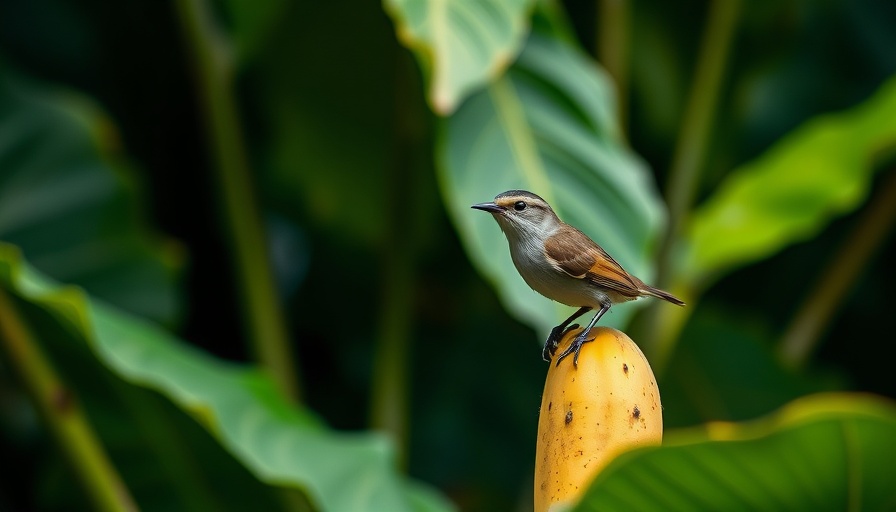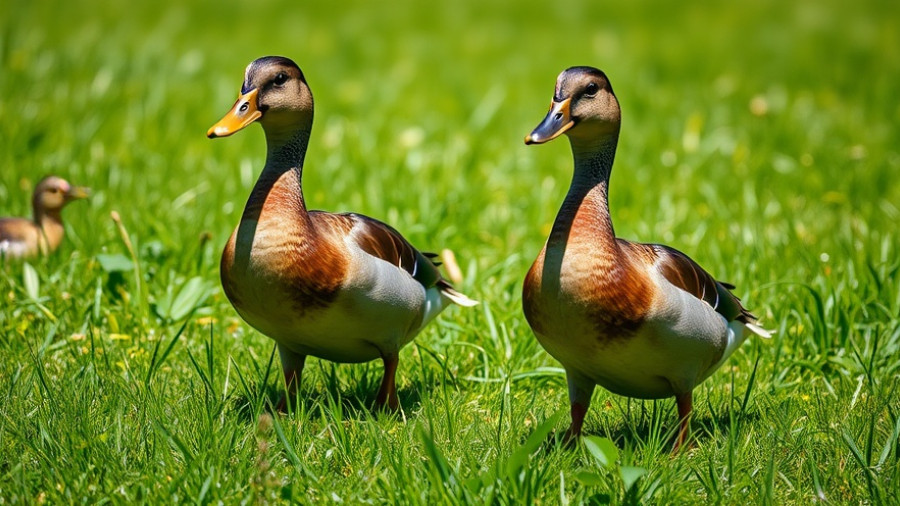
The Surprising Truth About Birds and Bananas
If you've ever tossed a banana peel into your garden, you've probably wondered: do birds really eat bananas? To your surprise, many birds do enjoy the sweet flavor and soft texture of bananas. But as with any food, moderation is key. Let's dive into the nutritional benefits of bananas for our feathered friends and discover which bird species are the most likely to indulge in this tropical treat.
Essential Nutrients in Bananas
Bananas are more than just a tasty snack; they are a powerhouse of nutrients vital for bird health. High in potassium, bananas help maintain healthy heart function and muscle coordination. Vitamins C and B6 found in bananas bolster the immune systems of birds, ensuring they can fend off diseases with ease. The natural sugars in bananas provide a quick energy boost, making them particularly favored by active bird species.
Bird Species That Enjoy Bananas: More Than Meets the Eye
Birds from various habitats have shown a penchant for bananas. From tropical parrots to common backyard robins, many feathered friends partake in this fruit. Parrots and tanagers particularly appreciate bananas, often seen nibbling on them during birdwatching excursions. While not every bird will show interest, introducing bananas may entice many to try something new.
Best Practices for Serving Bananas to Birds
When offering bananas to birds, preparation is crucial. Ensure to choose ripe bananas, slice them into manageable pieces, and consider removing the peel to minimize pesticide exposure. Present them on clean bird feeders or platforms, and always serve them alongside a variety of other fresh fruits and vegetables.
Moderation is Key: Understanding Potential Risks
While bananas can be a nutritious treat, there are several factors to keep in mind. As mentioned in various expert resources, overfeeding bananas can create a dietary imbalance, leading to nutritional deficiencies. Their high sugar content, though natural, must be considered carefully, particularly for birds with health concerns like diabetes. Observing these risks is essential for ensuring the health and well-being of your avian companions.
Your Bird's Preference: A Personal Anecdote
When I first offered bananas to the birds in my backyard, I was pleasantly surprised to see a group of finches happily tackling the soft fruit. They'd flutter back and forth, unsure at first, but once one took the plunge, the others quickly followed suit. This small experience highlighted how offering new food items can diversify a bird's diet and bring joy to both the birds and myself.
Frequently Asked Questions About Birds and Bananas
- Can birds eat banana peels? While not toxic, it's best to remove banana peels due to potential pesticide residue.
- How often should I offer bananas to birds? Bananas should be an occasional treat, given once or twice a week.
- Are overripe bananas safe for birds? Yes, they're generally safe but avoid any that show mold or a foul smell.
In conclusion, bananas can be a delightful and healthy snack for birds, full of rich nutrients that many can benefit from. Keeping their diet balanced and varied by including this fruit can lead to healthier, happier birds.
 Add Row
Add Row  Add
Add 




Write A Comment